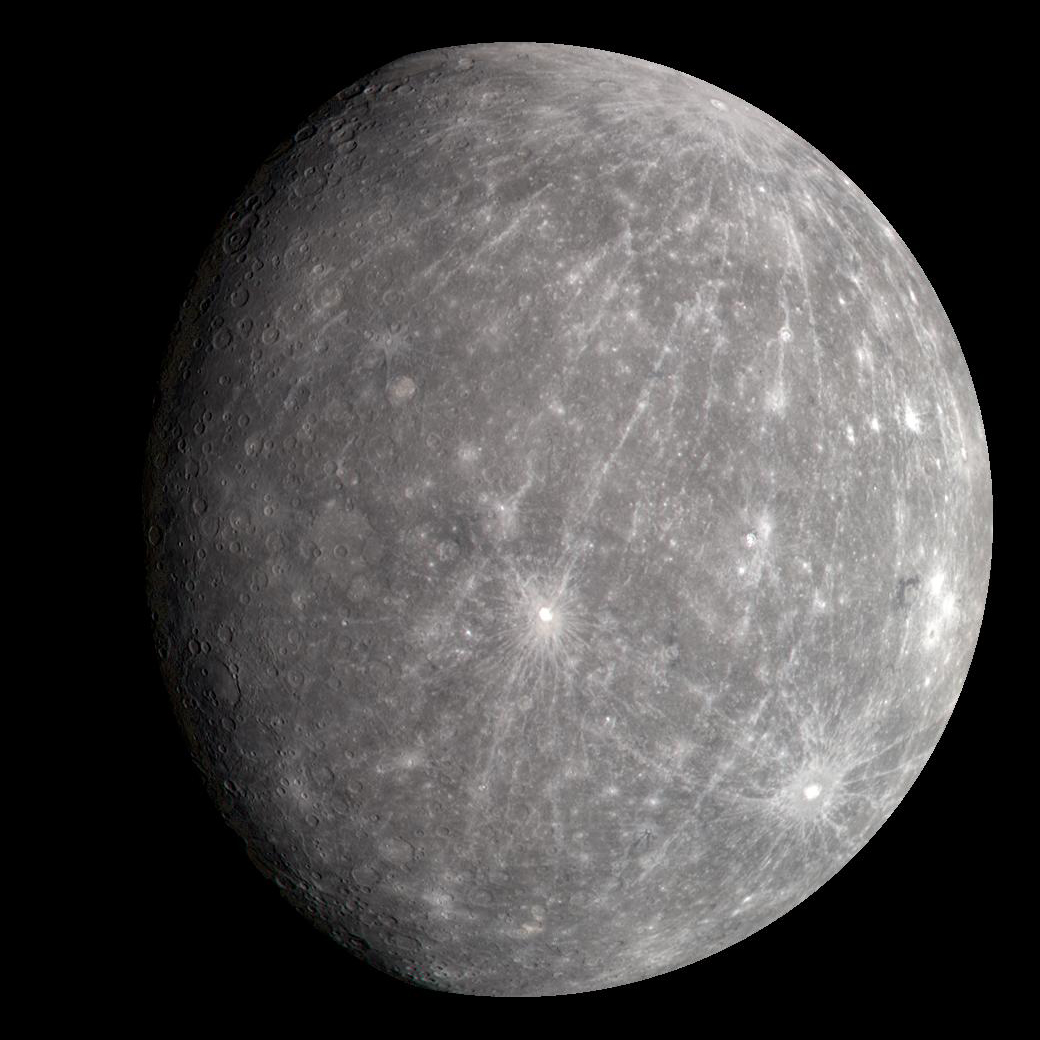🌞 Solar System
The Solar System consists of the Sun and everything bound to it by gravity — including planets, moons, asteroids, comets, dwarf planets, and more. It is our cosmic neighborhood and the only known system to support life.
🪐 The Eight Planets & Their Sanskrit Roots
-
 Mercury (Budha) – The smallest and closest to the Sun. In Sanskrit, Budha is associated with intellect and communication, and is considered a deity of wisdom in Hindu astrology.
Mercury (Budha) – The smallest and closest to the Sun. In Sanskrit, Budha is associated with intellect and communication, and is considered a deity of wisdom in Hindu astrology.
🌕 Moons: 0 -
 Venus (Shukra) – A hot, bright planet often visible before sunrise or after sunset. Shukra in Sanskrit is associated with beauty, wealth, and the teacher of demons in Hindu mythology.
Venus (Shukra) – A hot, bright planet often visible before sunrise or after sunset. Shukra in Sanskrit is associated with beauty, wealth, and the teacher of demons in Hindu mythology.
🌕 Moons: 0 -
 Earth (Prithvi) – The only known planet with life. In Sanskrit, Prithvi is the goddess of Earth, nurturing and life-giving.
Earth (Prithvi) – The only known planet with life. In Sanskrit, Prithvi is the goddess of Earth, nurturing and life-giving.
🌕 Moons: 1 (Moon) -
 Mars (Mangala) – The red planet. Mangala is the Sanskrit name linked to war and strength; Mars is the celestial commander in Vedic astrology.
Mars (Mangala) – The red planet. Mangala is the Sanskrit name linked to war and strength; Mars is the celestial commander in Vedic astrology.
🌕 Moons: 2 (Phobos & Deimos) -
 Jupiter (Guru or Brihaspati) – The largest planet. Known as Brihaspati, the teacher of the gods and a symbol of knowledge and expansion in Vedic tradition.
Jupiter (Guru or Brihaspati) – The largest planet. Known as Brihaspati, the teacher of the gods and a symbol of knowledge and expansion in Vedic tradition.
🌕 Moons: 95 (incl. Europa, Ganymede, Io, Callisto) -
 Saturn (Shani) – Famous for its rings. In Sanskrit, Shani represents karma, discipline, and time. Feared and respected, it teaches important life lessons.
Saturn (Shani) – Famous for its rings. In Sanskrit, Shani represents karma, discipline, and time. Feared and respected, it teaches important life lessons.
🌕 Moons: 146 (incl. Titan & Enceladus) -
 Uranus (Arun) – A tilted gas giant with an icy atmosphere. Sometimes associated with the Sanskrit word Arun (dawn, light), though not classically referenced in ancient texts.
Uranus (Arun) – A tilted gas giant with an icy atmosphere. Sometimes associated with the Sanskrit word Arun (dawn, light), though not classically referenced in ancient texts.
🌕 Moons: 28 (incl. Miranda & Oberon) -
 Neptune (Varuna) – The farthest known planet. Varuna is the Vedic deity of the oceans and cosmic order, making this a poetic match for Neptune’s deep blue and mysteries.
Neptune (Varuna) – The farthest known planet. Varuna is the Vedic deity of the oceans and cosmic order, making this a poetic match for Neptune’s deep blue and mysteries.
🌕 Moons: 16 (incl. Triton)
